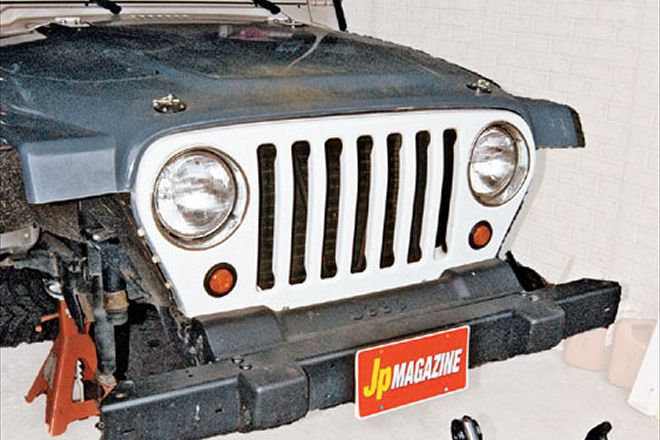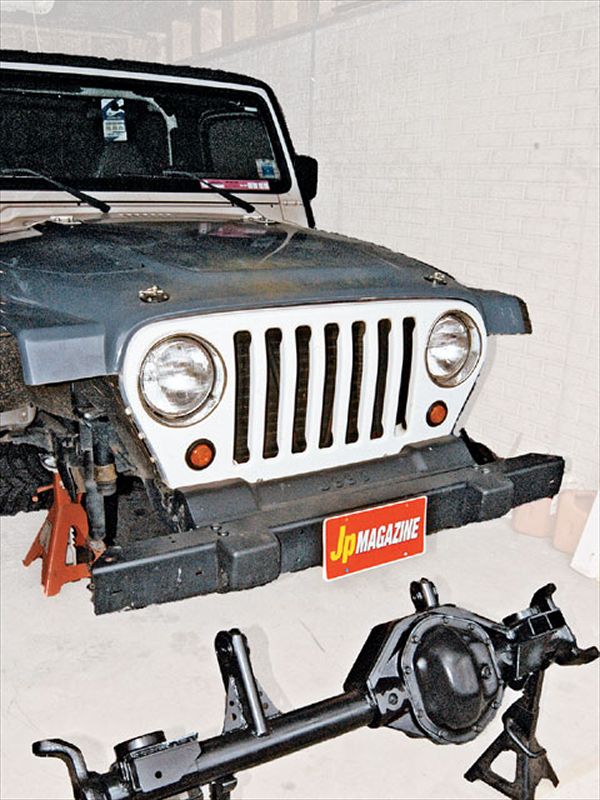
 Verne Simons
Senior Editor, Jp
Verne Simons
Senior Editor, Jp

In the last issue, we built up a junkyard-scrounged Honda Passport Dana 44 rearend for our four-banger '98 TJ. This axle allowed us to run disc brakes, bigger shafts, 5.89 gears, and a Detroit Locker. We gained serious traction and beef, all held in place with stout, weld-on axle brackets that you can install at home. This month, you'll find the buildup of possibly the best uncut front axle you can get at the junkyard for a YJ or KJ.
This axle is also a Dana 44, but it comes from a Jeep-namely '80-and-later FSJ Wagoneers. It has a driver-side drop differential, making it perfect for newer Jeeps with chaindriven, aluminum transfer cases. It's an extremely beefy assembly that features 2 3/4-inch diameter axletubes, desirable internal-spline locking hubs, 30-spline axleshafts, and big disc brakes (just like a 1/2-ton Chevy/GMC truck, Blazer, or Suburban 4x4). It also allows the use of any Dana 44 internal parts like our Yukon Gear 5.89 ring-and-pinion and Detroit Locker from Eaton. Perhaps the best part is that this axle matches the 6-on-5 1/2 lug pattern and width of our rear Honda Dana 44 axle. Here's how you put it in yourTJ.
PARTS AND COSTS Housing, knuckles, hubs, spindles, and yoke from junkyard $350 Suspension brackets from Dynatrac $400 Yukon 5.89 gears $191 Yukon master install kit $129 Detroit Locker $579 Gear install labor $250 Ball joints, upper and lower, on both sides $89 U-joints $55 Brake lines $40 Calipers $45 Brake pads $22 Rotors $70 Wheel bearings ${{{90}}} Spindle stud kit (all 12) $13 Seals $15 Spindle nuts and washer(per side) $9 {{{Wagoneer}}} tie rod $150 Drag-link ends $80 Inserts $24 Jam nuts $8 Tubing $40 Total: $2,649




 PhotosView Slideshow
PhotosView Slideshow







